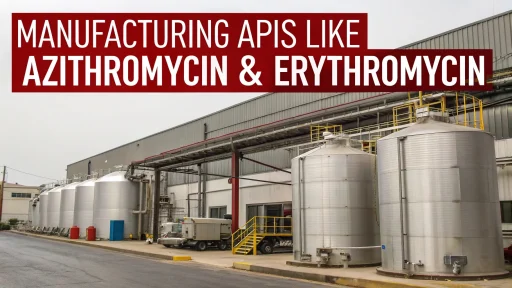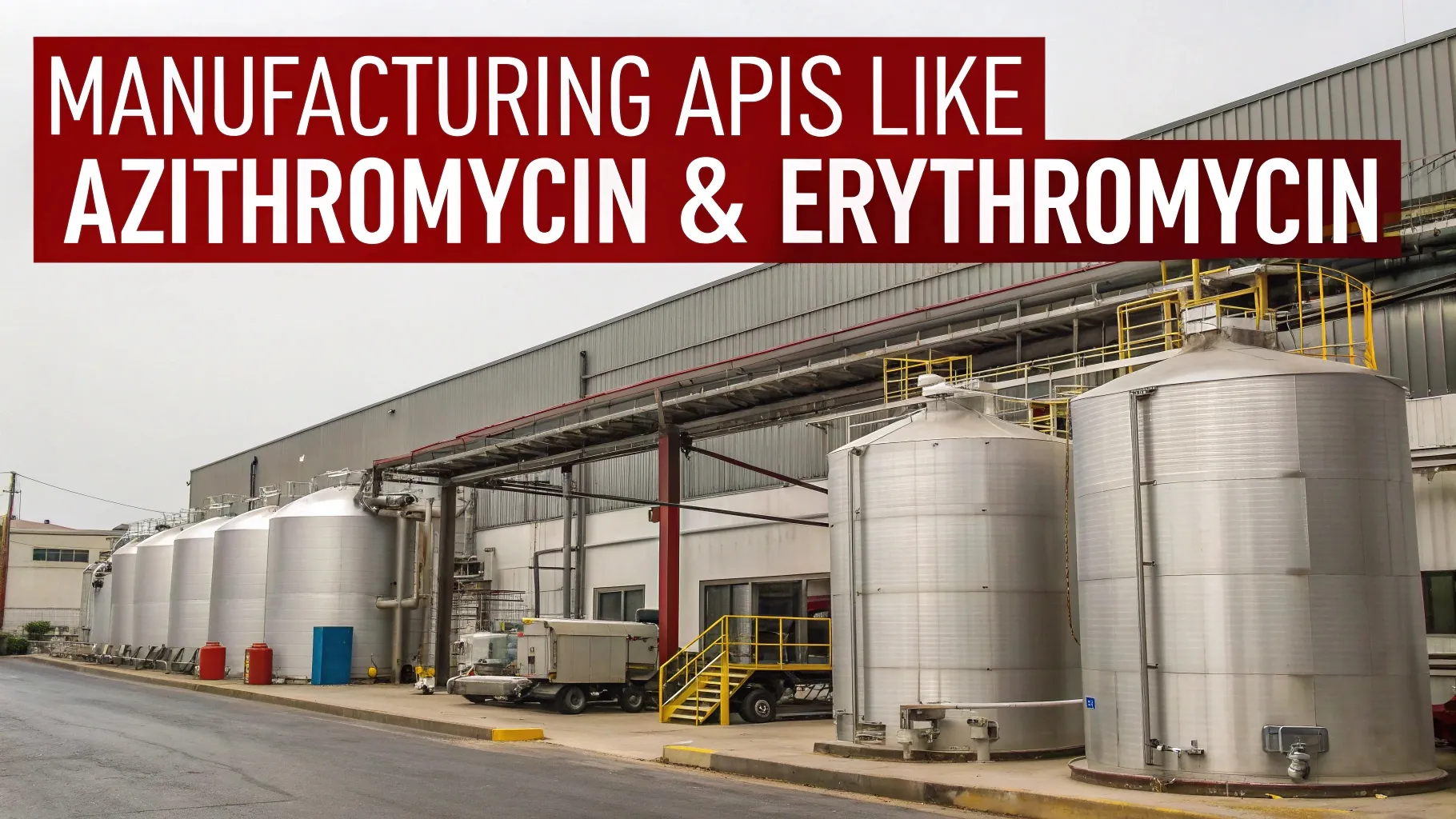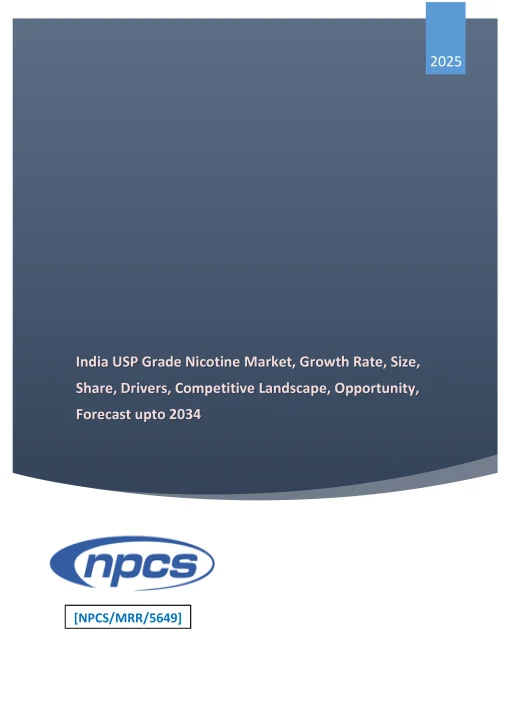Why API Manufacturing Is a Strategic Opportunity
In the global healthcare spectrum, India’s pharmaceutical sector is gaining prominence in the post-pandemic world. It has been globally recognized as the “Pharmacy of the World” due to its exports of vaccines and lifesaving drugs.Among numerous highly required Manufacturing APIs like Erythromycin and Azithromycin, there exists a growing need to grab hold of these macrolide antibiotics.
Their wide usage in treatment for respiratory infections, sexually transmitted diseases (STDs), skin infections, and even secondary Covid infections makes them widely accepted across borders. The shift to indigenous manufacturing is being aided by government policies focused on supporting domestic production with initiatives such as Production Linked Incentive (PLI) scheme.
It’s not merely a trend instead serves as substantial opportunity for pharma startups and entrepreneurs. With high returns and export potential coupled with robust integration into domestic supply chains makes it a reliable investment to manufacture these essential antibiotics. We will summarize in this article the technical aspects, scope of investment, market prospects, outline of processes, and implementation viability in manufacturing these APIs with special focus on Indian pharma-oriented MSMEs and new age chemical startup companies.
Analyzing The Market: Reason For Azithromycin And Erythromycin
Global And Domestic Demand Forecast
Both Azithromycin and Erythromycin are broad spectrum macrolide antibiotics which are largely utilized in prescription medicine. Particularly from 2020 onwards, Azithromycin has seen a spike in demand because it is being used to treat co-bacterial infections during recovery from covid infection.
As of 2023, the global market for Azithromycin API is valued at more than USD 2.1 Billion with a projected CAGR of 6-7% until 2030. The following factors contribute towards the growth:
- Higher rates of incidence for antibiotic bacterial infections
- Greater number of prescriptions by doctors for children and elderly patients
- Greater purchasing power for low income countries for cheaper generic medicines
In India, Azithromycin is one of the top ten antibiotics prescribed. It also available under many different brands. While most larger Indian companies have started to produce formulations like tablets and syrups, a large part of the API still needs to be imported from other countries especially China.
Erythromycin still is critical in today’s markets for curing skin infections, eye drops, acupuncture as well as suspensions in pediatric medicine. It has a global value of over 600 million dollars and India proves to be one of the major end-users and exporters of formulations based on erythromycin.
Import Dependency and Local Opportunity
India stands at the third spot for being one of the largest producers of pharma by volume. However, it does stand to lose over sixty percent of their API requirements. In 2021 Azithromycin was one of the top twenty APIs which got imported from China. This reliance not only elongates potential strategic risk but also bloats costs due to volatile currency exchange rates, freight charges, and geopolitical fluctuations.
By investing in domestic API manufacturing, India has the potential to:
- Decrease trade deficit losses when exporting pharmaceuticals
- Enhance control pricing on vital antibiotics
- Fuel “Atmanirbhar Bharat” and “Make in India” decisions
Related: Active Pharmaceutical Ingredients (APIs): The Ace of the Pharmaceutical Industry
Why Startups Should Consider this Field
It may seem hard for beginner entrepreneurs looking to start off an API unit, but as it seems with government aid coupled with rising demand there seems to be room leading for first-time entrepreneurs alongside MSMEs looking towards building midsize plants aimed around certain molecules such as Erythromycin or Azithromycin.
Check out these notable advantages:
- Guaranteed demand in the local and international markets.
- Possibility of enticing large-scale buyers leading to big contracts due to import substitution potential.
- Benefits under PLI scheme like subsidy, tax rebate, and financing on easier terms.
- Ability to later diversify into intermediates and formulations of the drugs.
It is now easier to get compliant land, utilities, suppliers, and resources due to pharma industrial parks, bulk drug clusters, and infrastructure specialized in APDs located in Telangana, Gujarat, Shimla and other states.
Manufacturing APIs Process Overview: Azithromycin And Erythromycin
Process For Manufacturing Azithromycin
Azithromycin is partially synthetically produced from Erythromycin. Its production involves numerous chemical as well as microbiological processes which includes:
- Erythromycin Fermentation: The fundamental compound is generated through fermentation with Streptomyces erythraeus (using specific microorganisms) which forms the base compound.
- Purification and Extracting: The crude form of erythromycin undergoes extraction, filtering with solvents followed by purification.
- Chemical Modification: The transformation process where some specific chemical reagents are applied onto the Erythromycin molecule for conversion into Azithromycin through methylation and ring expansion.
- Crystallization and Drying: The AZSweep Azithromycin gets crystallized after which filtration separates it from suspension containing the product wash to get API grade powder under vacuum drying conditions.
- Quality Testing: Quality Control measures for the product include HPLC assay, determination of moisture content and impurities, as well as analyzing particle size and assessing relevant impurities.
The process requires:
- Fermentation vessels
- Solvent recovery systems
- Reactors (SS & GLR)
- Centrifuges and dryers
- Dust and emission control equipment
This is a multi-step batch process with a duration of 2 to 3 days per cycle. The yields are between 65% and 75%, relative to efficiency.
Erythromycin API Production
Erythromycin production starts the same way with the fermentation of Streptomyces strains, followed by:
- pH-controlled crystallization
- Salt or base conversion (e.g., Erythromycin stearate or ethyl succinate)
- Filtration
This method is not as complex as Azithromycin since no further ring modifications are necessary.
Capital Investment and Setup Requirements
Pharmaceutical manufacturing costs tend to have higher compliance and engineering standards compared to other chemical sectors, but they do offer easier entry points. Single-molecule plants require such lower investments.
For the dedicated erythromycin APIs plants which would produce between 50–100 tons every year, around ₹15 to ₹25 crores would be needed depending on level of automation used, plant scale and geographical location of choice.
Breakdown includes:
- Fermentation, reaction, and drying equipment: ₹6–8 crores
- Quality control and R&D lab setup: ₹1 crore
- Licensing, validation, and working capital: ₹2–4 crores
Overall investment return is favorable with well organized batch scheduling. Profit margins near 18–25% are attainable based on purity levels, buyers, and current market trends.
Regulatory and Environmental Compliance
API facilities carry stringent regulatory oversights within the country and globally. Important approvals include:
- Granting of Drug Manufacturing License (Form 25) from State FDA
- Environmental Clearance from State Pollution Control Board
- cGMP Certification for export EAPI markets
- USFDA or WHO-GMP for regulated markets issuance deemed optional but beneficial
- HALAL compliance where required enables sale to wider consumer base
Given the APIs’ strong environmental impacts especially concerning solvents, fermentation byproducts, as well as process residues an ETP (Effluent Treatment Plant) system alongside zero liquid discharge systems may be necessary depending on regional zoning restrictions.
Marketing Your Business and Customer Base
As soon as you start operations, your customer base will consist of the following:
- Formulation manufacturers seeking a domestic source for APIs
- Contract Research and Manufacturing Organizations (CRMOs)
- Buyers in Africa, Latin America, and Southeast Asia
- Government under subsidized public health contracts
Achieving an accurate, compliant arm’s length supply chain partnership dealing with regulated pharma business is critical to building long-term customers who are loyalty-driven.
In what other ways can NPCS assist during the manufacturing process of your APIs?
Starting off with a new pharmaceutical project like manufacturing APIs comes with its own set of challenges including formulating an exact plan, estimating costs accurately among many regulations that must be taken into consideration. This is why NPCS stepped in.
Niir Project Consultancy Services (NPCS) specializes in conducting detailed Market Survey cum Techno Economic Feasibility Reports (TEFRs) focusing on API manufacturing business. The reports include:
- All Process Steps with Equipment Sizing and Utilities Breakdown
- Raw materials acquisition sourcing plant layout design requirements
- Comprehensive Financial Models Including Income Analyse ROI and breakeven portrayal visualizations
NPCS assists entrepreneurs by helping reduce planning risks through industry-shared insight to implementation guidance from idea stage until chakras aligned application.
Conclusion: Turning a Global Challenge into a Local Opportunity
India’s dependency on imported APIs has long been a vulnerability, but it is now a major business opportunity. For entrepreneurs and MSMEs with pharma aspirations, manufacturing Azithromycin or Erythromycin APIs offers a way to build a technically rewarding, economically scalable, and globally relevant business.
The demand is strong. The government is supportive. The infrastructure is growing. And with the right technical partners and guidance from organizations like NPCS, your vision of entering API manufacturing can soon become a reality.







